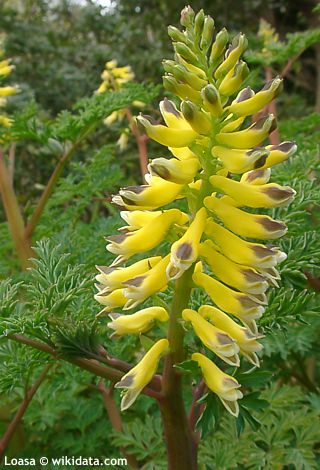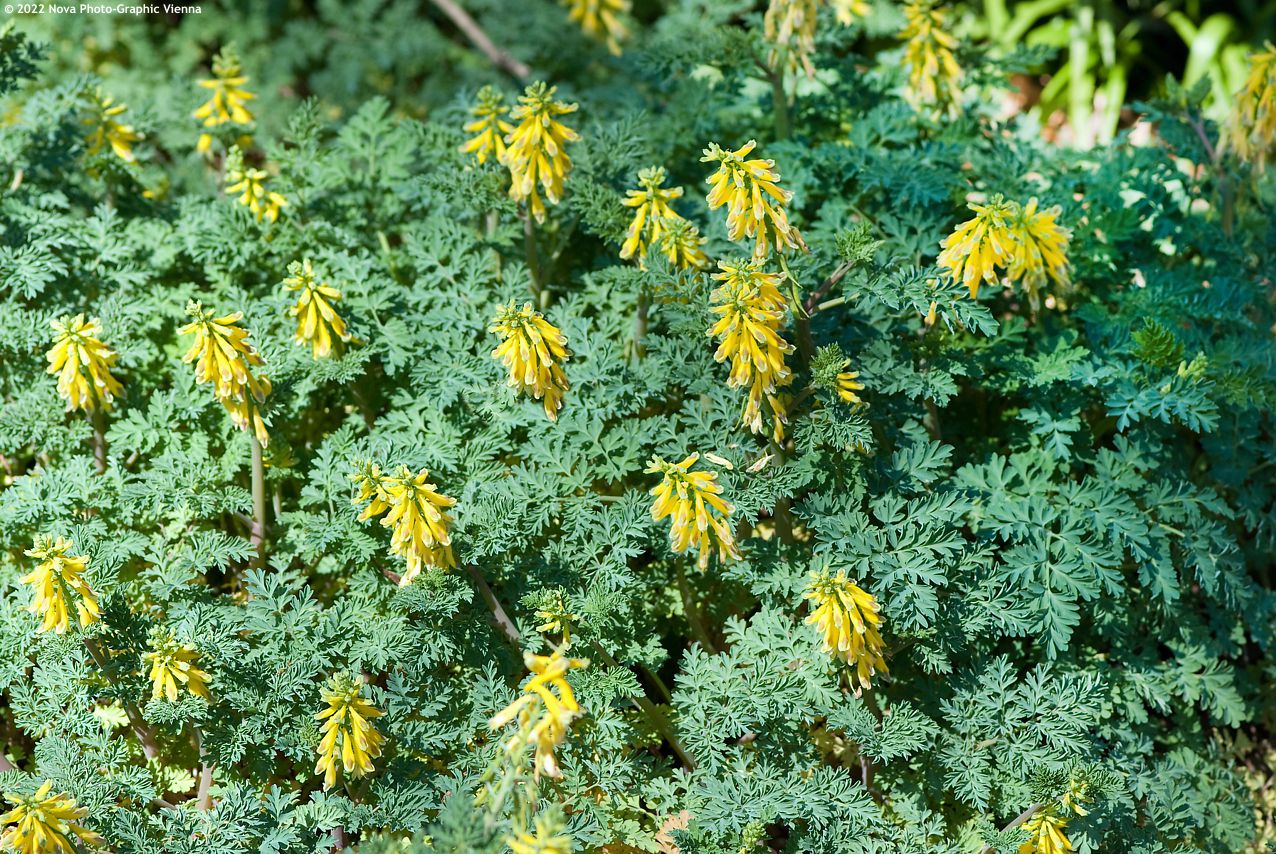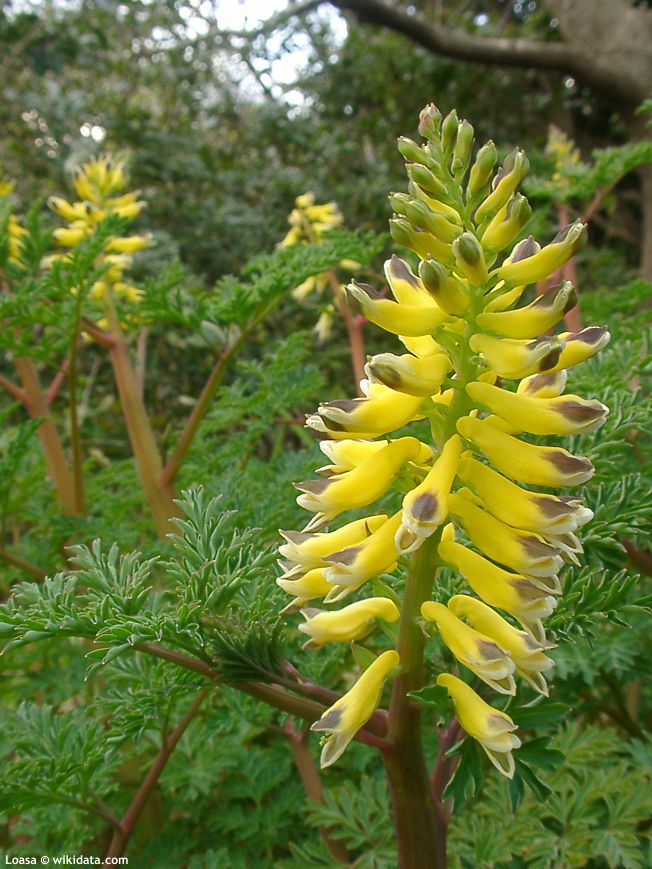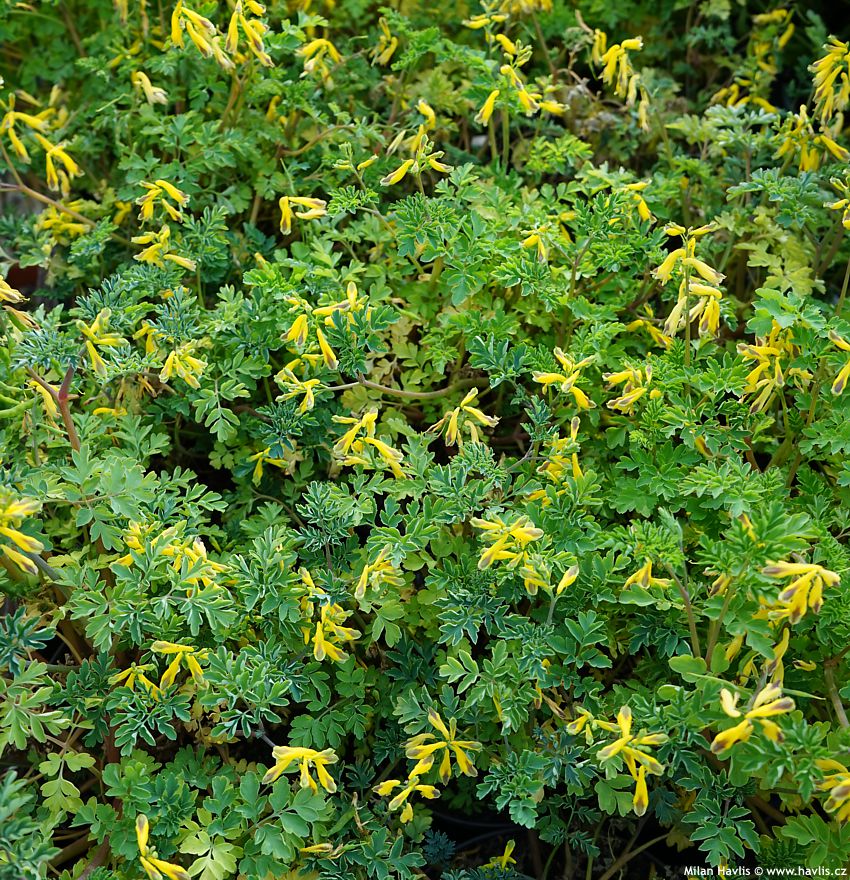Corydalis heterocarpa Japanese fernleaf corydalis
size/type
mid-sized perennial,mid-sized perennial
usual height
0,2-0,6m
usual width
0,3-0,4m
leaves
deciduous broadleaf
colour of leaves
flowers
showy
colour of flowers
blooming time
May-July
location
full to partial sun
soil type
any (acidic to alkaline)
soil moisture requirements
evenly moist but well-drained
USDA zone (lowest)
5b (down to -27°C)
winter protection
for zone 5+6

for zone 7

categorized
Description of the plant:
Japanese fernleaf corydalis is a bit of a soloist among corydalis because unlike its sisters this one does not bloom in blue but yellow. It is a self-seeding biennial or short-lived perennial from the poppy family and it is quite variable in size and habit. Its natural habitat are sandy and coastal areas of East Asia (South Korea, East China and Japan).It begins flowering in May and makes dense and erect racemes with short, narrowly tubular, rich yellow with a brown flare towards the tips which distinguishes it from only single-colored corydalis lutea. Flowering continues until July and the flowers are followed by short, narrow, seedpods with seeds that make the next generation of plants possible because the original plant usually dies after flowering. Exceptionally and only under good soil and climatic conditions, plants may survive and propagate by short rhizomes.
The leaves are no less attractive, they are bi-pinnate as a fern leaf, medium green and matte on the top, and pale blue green to grey on the reverse. They have a unique, distinctive scent. The whole leaf can be 10 to 30 cm long and the height of the flowering stem is equally variable – from 20 to 60 cm.
Corydalis is usually an undergrowth perennial of not very dense forests and their edges, but this species loves sun if it has good soil but can live in filtered sunlight or partial shade, too. It thrives in sandy loam which does not dry out much but is free draining. Soil pH is not important, nor is fertilization. If the plant is weak after flowering, its above-ground parts die back and leaves re-emerge in late summer when the temperature has cooled down. Hardy to about -27 ° C. (USDA zone 5).
Last update: 29-05-2022
QUICK PRICE OVERVIEW
CURRENTLY SOLD OUT
















